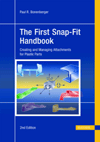Hoists and cranes boost productivity, improve ergonomics and reduce damage to parts and assemblies. That’s not to say, however, that assemblers can take a cavalier attitude toward these devices. Here are some do’s and don’ts for using hoists and cranes.
- Do read the ASME/ANSI B30 safety standard for cranes.
- Do not lift more than the rated load.
- Do read the hoist manufacturer’s operating and maintenance instructions.
- Do not use a hoist that is not working correctly.
- Do be familiar with operating controls, procedures and warnings on the unit.
- Do not use a hoist with twisted, kinked, damaged or worn wire rope or chain.
- Do make sure hook travel is in the same direction as shown on controls.
- Do not lift a load unless wire rope or chain is properly seated.
- Do make sure hoist limit switches function properly.
- Do not use the hoist’s load-limiting device to measure the load.
- Do maintain firm footing when operating hoist.
- Do not use wrap wire rope or chain around the load.
- Do make sure that slings are properly sized and seated in the hook saddle.
- Do not lift a load if binding prevents equal loading on all supporting ropes and chains.
- Do use hook latches wherever possible and make sure that the latches are closed during use.
- Do not operate unless load is centered under the hoist.
- Do make sure that the load is free to move and will clear all obstructions.
- Do not allow your attention to be diverted from operating the hoist.
- Do take up slack carefully, check the load balance, move the load a few inches, and check load holding action before continuing.
- Do not operate hoist beyond limits of rope or chain travel.
- Do keep the load or hook from swinging.
- Do not use limit switches as routine operating stops unless recommended. They are emergency devices only.
- Do make sure that workers stay clear of the suspended load.
- Do not use hoist to lift, support or transport people.
- Do warn personnel of an approaching load.
- Do not lift loads over people.
- Do protect wire rope and load chain from weld spatter or other damaging contaminants.
- Do not leave a suspended load unattended.
- Do promptly report any malfunction, unusual performance, or damage to the unit.
- Do not allow sharp contact between two hoists or between hoist and obstructions.
- Do inspect the unit regularly, replace damaged or worn parts, and keep records of maintenance.
- Do not adjust or repair a hoist unless you are qualified.
- Do use the manufacturer’s recommended parts when repairing the unit.
- Do lubricate the wire rope or load chain as recommended by the manufacturer.
- Do not lengthen the load rope or chain or repair damaged load rope or chain.





